The London Green Directory!
Air Quality | Waste | Food | Water | Energy | Transportation | Ecowise Consuming | Empowerment| Biodiversity
Waste

The range of topics in this section is broad because of the scope of this environmental concern. We know nature does not create waste yet Canadians are among the most wasteful societies in the world. As a result, our landfill sites continue to grow as new ones are discussed. The solution to the waste problem then, begins at home, through our personal actions and in our communities.
Ecological Footprint
What is an ecological footprint?
Today, the majority of countries in the world (more than 80%) have ecological deficits, using more resources than ecosystems can regenerate. This deficit is referred to as a global ecological overshoot. Since the 1970s, this annual demand has exceeded what the Earth regenerates each year.

An ecological footprint is a resource accounting tool that helps countries understand their ecological budget and gives them the data necessary to manage resources better to secure their future. An ecological footprint can identify the demands humans place on nature. It measures what we consume from nature, for individuals, organizations, cities, regions, nations or humanity as a whole. It shows how much biologically productive land and water we occupy to produce all the resources we consume and to absorb our waste.
Source: Global Footprint Network, www.footprintnetwork.org

Where is Canada at?
According to World Atlas, Canada is among the top 10 countries with the largest ecological footprints in the world with a footprint of 7.01 gha/person. Canada’s environmental capacity to regenerate resources (biocapacity) in 2014 was 14.6 global hectares per person (gha), meaning our biocapacity exceeds our footprint of land and sea use throughout the world to support each Canadian given our current lifestyle. In 2019 Canada’s biocapacity was 14.5gha per person versus the ecological footprint of 7.9gha per person leaves Canada with a biocapacity reserve of 6.6gha that is projected to increase as we continue to find new ways to reduce our ecological footprint.
In a 2004 Federation of Canadian Municipalities’ (FCM) report, commissioned to develop the first estimates contributing to FCM’s Quality of Life Indicators reporting system, it was found that municipalities with higher footprints also had higher residential incomes. While the majority of municipalities in this study fell within 6% either below or above the Canadian average ecological footprint of 7.25 hectares at the time, York (114%), Ottawa (119%), Halton RM (123%), Edmonton (130%), and Calgary (136%) had ecological footprints that were at least 10% greater than the Canadian average. London is partnering with Project Neutral to help residents and businesses learn how to take climate action and calculate their carbon footprint.
The planet’s biological productive capacity (biocapacity) is approximately 1.5gha per person. Globally, we use up to 2.6gha per person. We are living at a biocapacity deficit of 1.1gha per person, according to a 2023 report from the Global Footprint Network. This means we would need 170% of Earth’s biocapacity to continue living as we are now.
To better understand how you can personally make a difference and decrease your ecological footprint see World Centric’s “Tools for Conscious Living”.
What about London’s footprint?
The FCM report (2005) listed London’s ecological footprint at 6.97 hectares per person at the time. As of 2024 FCM is advocating for the deepening of federal-municipal collaboration on achieving Canada’s 2030 climate target on a pathway to net-zero emissions, including by implementing the Canada Green Building Strategy. To find out your own personal Ecological Footprint, visit https://london.ca/climateaction. Use Project Neutral’s ecological footprint calculator to measure your personal climate impact.

Waste Management
In Canada, the responsibility for managing and reducing waste is shared among federal, provincial, territorial and municipal governments. Canadians being among the largest waste producers per capita on the planet, the amount of food wasted each year is particularly staggering. In Canada 50 million tonnes, about $20 billion worth, of food is wasted annually. This equates to about 79 kilograms, or $1,300 worth, of food wasted per average household per year. Consumers are responsible for the largest share of food waste, at approximately 47%. The remaining food waste is generated along the supply chain, where food is grown, processed, transported and sold.
The federal government controls international and interprovincial movements of hazardous waste and hazardous recyclable material, as well as identifying best practices to minimize possible toxic pollution from the management of waste. Globally it is interested in addressing food loss and waste. A North American Initiative on Food Waste Reduction and Recovery explores opportunities to reduce avoidable waste. Residential food waste falls under various federal initiatives such as the Sustainable Development Strategy to support climate change given the methane emissions with respect to agricultural systems, transboundary movement of hazardous waste and recyclables, and toxic releases. In November 2018, the federal government launched an international Ocean Plastics Charter to address plastics pollution, next step being a Canada- wide zero-plastic-waste strategy. In 2014, every Canadian threw away on average 706 kg of waste. Zero plastics will expect to reduce this number by 30% per person.by 2030, 50% by 2040 and less greenhouse gas emissions by a projected 15 million tonnes. In October of 2020 Environment and Climate Change Canada proposed a plan to achieve the goal of zero plastic waste by 2030, following a science assessment on plastic pollution. In December 2021 proposed the Single-use Plastics Prohibition Regulations and they were published in June 2022. The regulations officially prohibit the manufacture, import, and sale of 6 categories of single-use plastics. These six categories are: checkout bags, cutlery, foodservice ware, ring carriers, stir sticks, and straws. The prohibition timelines are staggered to allow time for the industry shift away from plastics. All manufacturing, import and export of these plastics will be prohibited by December 20th 2025.
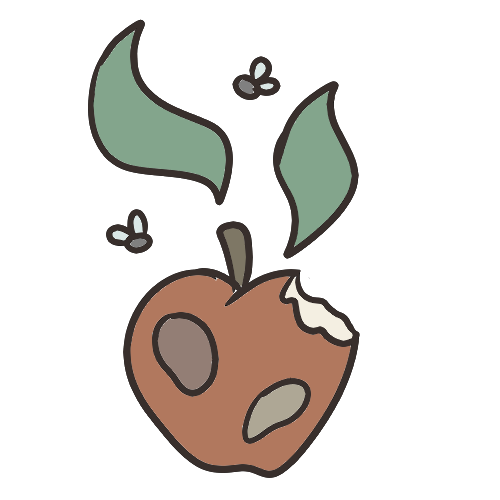
Provinces and territorial authorities establish waste reduction policies and programs, and approve and monitor waste management operations such as recycling centres, landfills and hazardous waste facilities. Discarded organics are a significant source of greenhouse gas pollution, representing 5% of Ontario’s total emissions. Existing provincial programs include: the Tires Regulation, Batteries Regulation, Electrical and Electronic Equipment Regulation, and the Hazardous and Special Products Regulation. All of these regulations are based on the framework of the Resource Recovery and Circular Economy Act (2016). The province also has a Deposit Return Program for alcohol containers.
The Food and Organic Waste Framework’s Action Plan and Policy Statement, April 30, 2018, includes policy statements and targets directing municipalities and all private businesses to take actions. The Waste-Free Ontario Act (2016) and Waste-Free Ontario: Building the Circular Economy Act requires producers to take full responsibility for recovering resources and reducing waste associated with their products and packaging as well as reintegrating that waste into the production stream. The Ontario government has also introduced a regulation requiring producers to collect and safely manage the full life-cycle of their electrical and electronic equipment, such as cell phones, computers, printers and gaming equipment. The Made-in-Ontario Electronics regulation, enforceable as of January 1, 2021. also promotes the reuse and refurbishment of products so they can be resold.
Up to 50% of food waste is avoidable. Ontario residents generate 3.7 million tonnes of organic waste every year. It is estimated more than 2 million tonnes of it goes to landfill. In breaking down, it creates methane, a greenhouse gas, 25 times more potent than carbon dioxide. Without change, Ontario will need 16 new or expanded landfills by 2050. That’s why we must take action to reduce the amount of food and organic waste we generate. For more information on how Ontario plans to tackle waste management and waste reduction overall, visit their webpage here.

In London, more than a tonne of waste is produced per person each year. This includes waste generated at home as well as the workplace. Much is diverted through reduction, reuse, recycling of materials such as scrap metal and electronics and the Blue Box, composting, for instance leaf and yard materials, and biogas programs. The remainder goes to the City’s W12A landfill site. There is also a small amount of waste from outside of London delivered to our landfill, while some of London’s business waste is taken to landfills outside of the city for disposal. London’s landfill was expected to reach capacity by 2025 without interventions..
Thus in 2018, the City developed a long-term Residual Waste Disposal Strategy, a plan to manage residual waste (material that goes to landfill) that cannot be diverted and requires a mandatory Environmental Assessment (EA) approved by Ontario’s Ministry of the Environment, Conservation and Parks, and Cabinet. This plan expects to expand the W12A landfill site and find solutions to manage residual waste until 2050 (25 years beyond the current approved capacity of the landfill). Other smaller municipalities may be required to use the site as well given certain limits. In 2020 London committed to increasing its current residential (household) waste diversion rate to 60% by 2022, from the 2018 rate of 45%. Unfortunately the Covid-19 Pandemic Emergency that occurred in March 2020 caused plans to be delayed by six to eighteen months. This caused the City to need to readjust their timeline and budget to align with 2021-2023.

A companion Resource Recovery Strategy involves a plan to maximize waste reduction, reuse, recycling, and resource recovery in an economically and environmentally responsible manner. It identifies new, emerging and next generation technologies including green bin as well as areas to reduce or maintain current costs of City programs; and to align with the province’s focus. In January 2024 London began implementation of a Green Bin program. The Green Bin program is a household organics curbside pick-up program with the overall goal of reducing the amount of organic wastes that go to the landfill. After pick-up the bins are taken to Convertus’ organic waste processing plant to have their contents converted into biogas to fuel transport, fertilizer and compost. The Green Bin program is set to divert up to 20,000 tonnes from the landfill each year. London’s current Residual Waste Disposal Plan is seeking to expand the current W12A landfill for use for the next 25 years. Ontario’s Ministry of Environment & Energy is still pending approval of this expansion and is currently considering the necessary conditions of approval for the project.

Taking Personal Action
In 2018, TREA visited residents in our neighbourhoods to discuss personal planning for further waste reduction. Please visit our Waste-Free Initiative page to participate with our waste reduction survey, waste guide and 30 day waste reduction challenge. We also introduced a program for elementary schools including a survey, activity book, and curriculum materials in the spring of 2021 as another option to visit neighbourhoods.
During 2019 and 2020 TREA partnered with ReImagine Co to found a tool lending library (an option to reduce purchase of seldom used tools and items going to landfill), now housed and facilitated by Reimagine Co alongside their waste free grocery and community hub space. We expect to continue to promote waste free in the foreseeable future. We welcome your participation.
“The whole idea is don’t use things that you only use once and throw away. Disposability is an attitude, it’s not a necessity.”
– David Suzuki
To find out more about alternative type cleaning recipes, as well as composting, recycling of home renovation waste, grass recycling and other topics look local to the TREA and other local environmental organizations. Look into Urban Roots London’s community composting program, the Middlesex London Food Policy Council’s food waste lessons, or the London Food Coalition’s Food Waste Lessons and others!
Household Waste Disposal in London
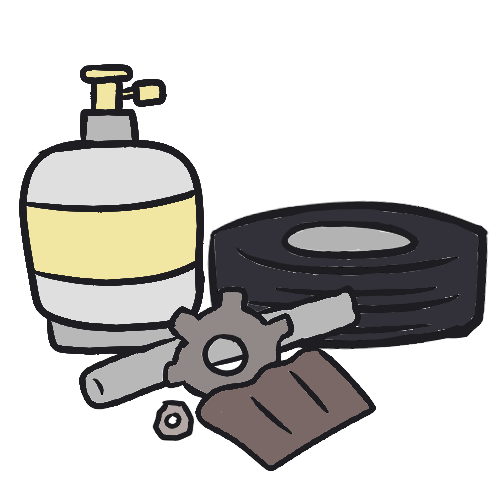
London’s Household Special Waste Depot is located at the W12A landfill – 3502 Manning Drive. The Depot is open Monday-Friday, 8 a.m. to 4 p.m. and Saturdays, 8 a.m. to 3 p.m. Check your City waste calendar as some of these items are taken at local businesses as well. Items accepted by the City include materials such as:
— Corrosives such as battery acids, drain cleaners
— Flammable products such as lighter fluid, turpentine, gasoline,
cleaning solvents
— Toxins such as poisons, bleach, medications, pesticides, paints, cleaning fluids
— Batteries such as car batteries, flashlight and other small types
— Used oil, glues, nail polish and remover, cooking oils/grease, smoke detectors
— Fluorescent tubes and bulbs
— Scrap metal, propane tanks
Accepted materials are transported off-site for subsequent disposal or, recycling. For details – call the City of London Public Service and Solid Waste Management Division – (519) 661-2489 or send an e-mail to service@london.ca.

Electronics/e-waste are accepted at W12A and the City’s EnviroDepots. This includes: computers, printers, radios, stereos, cameras, gaming consoles, televisions, computer monitors, cell phones, remote control toys, etc. Please note the City does not pick up electronics with your residential garbage collection.
London has EnviroDepots at 28 Clarke Road S, 1450 Oxford Street W and Try Recycling at 21462 Clarke Road N.
Stepping Lightly on the Earth
“The only long-term solution to keeping our air and water clean and our homes safe is waste reduction. Householders, like industries, must learn to live without many of the ‘wonder’ products invented in the last 50 years. But when we remember that these products are identical to the substances that poison our air and water, we can readily commit ourselves to making more responsible choices.” Greenpeace, Toronto.

Household Cleaners
The aisles of grocery stores, hardware stores and drugstores contain a large range of cleaning products. As many are targeted for a specific use, it is easy to acquire a collection of products in your home. These cleaners often contain harmful substances that will eventually end up in rivers and lakes. In order to reduce packaging and ensure minimal impact on the environment, we recommend using the homemade cleaners suggested next. If your workplace asks for commercial cleaners, encourage them to look at several options, otherwise look for multi-purpose, concentrated products with minimal packaging. Although many products are listed as phosphate-free, be aware that, besides phosphate, bleaches and enzymes can cause pollution of water sources.
Household cleaners do not have to poison lakes and streams and threaten our health. Environmentally responsible alternatives to harmful commercial products can certainly be made from major ingredients such as washing soda, vinegar, pure soap powder and baking soda.
Specific cleaning solutions
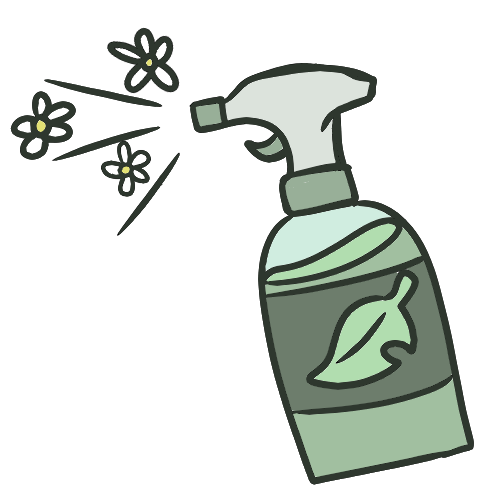
All purpose metal cleaner:
- 3 Tbsp of diatomaceous earth
- 3 Tbsp of baking soda
- Enough lemon juice to make a paste
Rub paste gently into metal and rinse with water.
All purpose cleaner:
- ½ cup of vinegar
- ¼ cup of baking soda
- 2 liters of water
Can be used for cleaning water deposit stains on shower panels, bathroom chrome fixtures, windows, bathroom mirrors, etc.
Aluminum cleaner:
- 2 – 3 lemon halves or 1 grapefruit
- Enough water to cover
Cut four ways in a pan with water then add tarnished utensils and place on stove at low heat for about 1 hour.
Carpet freshener:
1 cup of baking soda
Sprinkle area in need with baking soda, then vacuum.
Chrome cleaner:
- 3 Tbsp baking soda
- Enough water to make a paste

Clean and rinse or rub with a pencil eraser or steel wool.
Gold cleaner:
- 2 Tbsp baking soda
- Enough water to make a paste
Rub paste with a sponge or cloth on the gold then rinse, polish dry.
Drain cleaner:
- ½ cup of baking soda
- ½ cup of vinegar
Pour the baking soda, then the vinegar down the drain. After 15 minutes, pour boiling water down the drain. Note, only use this method with metal plumbing; and do not try this method after using a commercial drain cleaner.
Rugs and upholstery cleaner:
- 6 Tbsp soap powder
- 2 cups boiling water
- 2 Tbsp borax

Mix together and let cool. For use; shake vigorously then use only the suds and apply with brush or damp cloth (test a hidden area first for colour).
Used paint brushes cleaner:
500ml-1L of vinegar (as needed)
Boil the vinegar on the stove then soften the brushes by immersing brushes in hot vinegar.
Wood cleaner and polish:
- 1/8 cup food-grade linseed oil
- 1/8 cup vinegar
- 1/4 cup of lemon juice
Mix ingredients in a glass jar then add a few drops of vitamin E, cover, store for later use.
Laundry Cleaning Recipes:
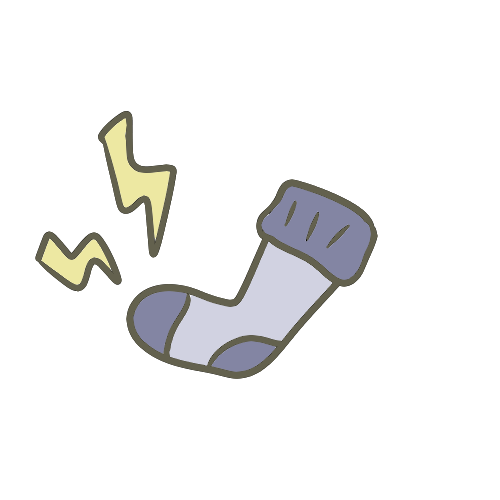
Anti-static agents:
- Damp towel
- Clothing line
Static builds up when clothes dry. Place a damp towel in the dryer with lighter items instead of an anti-static product. For heavier loads, consider hanging laundry on a clothing line when nearly dry.
Bleach substitute:
- Borax
- 12 parts water
- 1 part white vinegar
- 1 cup of 3% hydrogen peroxide
Borax can be used as a direct replacement, so can 12 parts water to 1 part white vinegar. Hydrogen peroxide can be added to laundry in the automatic bleach dispenser or add as the washer is filling before you add the clothing, so that it is distributed evenly.
Detergent substitute:

- 1/3 cup of washing soda
- 1/2 cup of soap powder
- Enough hot water
Add washing soda and soap powder to hot water as machine fills. Add clothes when both ingredients dissolve. In hard water, add extra 1/4 cup of washing soda.
Fabric softener substitute:
1/2 cup of baking soda
Add baking soda to machine as it is filling and let it dissolve before adding your clothes.
P.S. – Don’t forget to use a clothesline instead of a dryer if you can to cut down energy use and add freshness to your clothes
Stain Removal Solutions:
There are alternatives to enzyme presoaks and bleach for tough stains. Test the options below first on the fabric to check for discolouration. If this occurs, neutralize the cleaning agent immediately. Acids (lemon juice and vinegar) neutralize bases (baking soda) and vice versa. Always wash after application. When using substitute stain removers, the correct ingredients and concentrations are dependent on the type of stain. Please see our options for different kinds of stains below:

Berries: Soak clothing in vinegar
Blood: Soak in a mixture of cold water and hydrogen peroxide. For more stubborn stains mix cornstarch, talcum powder or cornmeal with water and apply the mixture. Then allow to dry and brush away.

Butter, chocolate or wax: Make a paste from washing soda and water, then rub the stain.
Chewing gum: Rub the gum with ice, then peel off when hardened.
Coffee: Mix an egg yolk with lukewarm water then rub on stain.
Crayons: Rub with toothpaste.
Decals: Rub with vinegar or vegetable oil

Egg: Wash in cold water
Fruit or wine: Immediately pour salt or hot water on the stain then soak in milk before washing.
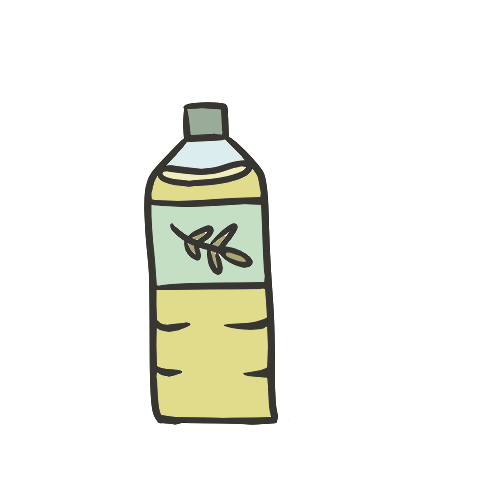
Grass: Soak in a mixture of vinegar or alcohol and water.
Grease: Pour boiling water on stain, rub dry baking soda or lard into stain, then wash.
Heavy soils: Rub 2 Tbsp washing soda into stain in 1/4 cup of warm water.
Ink: Soak in milk or remove with hydrogen peroxide on the stain.
Lipstick: Rub stain with cold cream or shortening, then wash with washing soda.
Machine oil: Scrub with washing soda and water.
Mustard: Rub stain with vegetable glycerine soap.
Nail polish: Rub stain with alcohol.
Oil: Wipe with vegetable oil (oil draws out oil) then rinse in warm water.
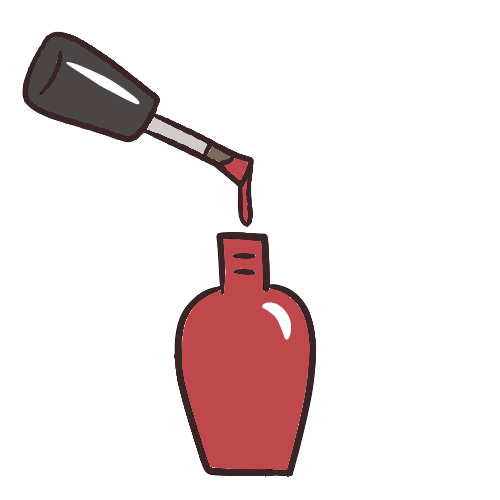
Paint: Soak in a mix of hot vinegar or washing soda and water.
Rust: Saturate with sour milk or lemon juice and rub with salt. Then place in direct sunlight until dry. Alternatively, rub or soak with a cola then wash as usual.
Scorches: Boil scorched article in a mixture of 1 cup soap and 4 cups of milk.
Shellac: Wipe stain with alcohol.
Soiled diapers: Pre-soak in 1/4 cup of baking soda dissolved in warm water before washing in tub or machine.
Unknown Stains: Rub stain with a paste mixture of borax and vinegar.
Disclaimer: Used with permission from Green Earth Environmental Products – London, Earthkeeper Magazine – Guelph, and Greenpeace – Toronto. The Green Directory and those listed cannot assume responsibility for the effectiveness of the suggested cleaners. Caution urged in use of all cleaning solutions. Keep from reach of children.
Avoiding Pesticides
Eating Organic
Increasing your consumption of organic foods is a great way to decrease your ecological footprint as it supports organic farmers for more sustainable and healthy farming practices. For more information, visit the Canadian Organic Growers’ website. For local organic growers, visit London Area Organic Growers on their website.
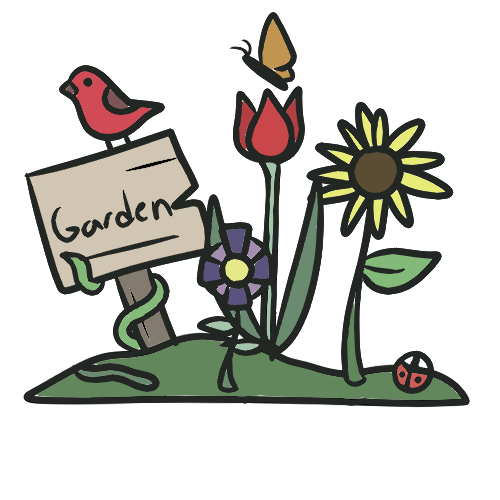
Chemical Free Garden and Lawn Care
TREA compiled a Pesticide-Free Kit for Londoners to help citizens understand issues surrounding landscapers being accredited for Integrated Pest Management (IPM). Visit TREA’s Pesticides 101 page for more information and ways to control pests and care for your lawn and garden in a more eco-friendly way.
Ontario’s Cosmetic Pesticide Ban
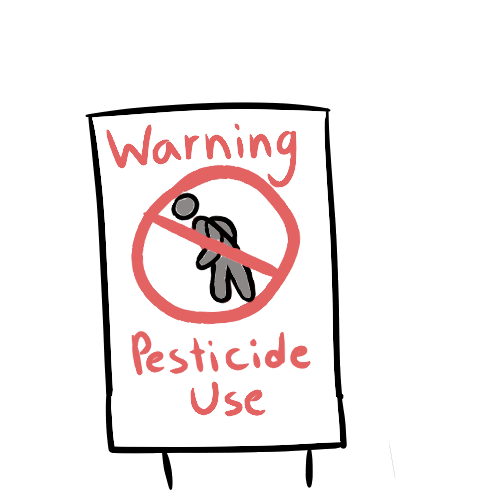
Ontario’s Ban came into effect April 22, 2009. It supersedes the City’s Pesticide By-law from 2006, and any other municipal pesticide by-law. Now there is just one set of rules across Ontario.
Pesticides cannot be used for cosmetic purposes on lawns, vegetable and ornamental gardens, patios, driveways, cemeteries, and in parks and school yards. This includes many herbicides, fungicides and insecticides which pose risks to our health. Over 250 products for sale were banned and more than 80 pesticide ingredients for cosmetic uses. There are exemptions for public health or safety reasons such as fighting West Nile Virus, killing stinging insects like wasps, or controlling poison ivy and other plants poisonous to the touch as well as specific tree, agriculture and forestry care. Other exemptions include sports fields for specific competitions, golf courses accredited on Integrated Pest Management (IPM) practices, speciality turf and public works specific to highways, railways, power works, gas works, water works and other utilities, transit/ transportation corridors and the perimeter of nuclear facilities. Exceptions do not apply to areas pedestrians use on a regular basis or picnic and rest areas. 11 classifications are used to support the ban and clarify when exceptions do and do not apply to a pesticide. Visit the article release in the Ontario Newsroom archive more information.
For more information, visit the province’s website or call Ontario’s Ministry of Environment, Conservation, and Parks at 1-800-565-4923.
Chemical-Free Lawn Care

There are things you can do to create a beautiful lawn without chemicals. Ideas include:
— planting several types of drought-resistant grasses, and/ or ground covers
— raking your lawn thoroughly in the spring
— aerating the lawn using an aerator tool
— overseeding bare patches
— applying a mulch of compost or other organic material yearly
— mowing high (minimum 8 cm) as this reduces weed growth
— leaving grass clippings on the lawn

— watering thoroughly once a week when required (more frequent, light waterings induce a weak and shallow root system)
— trying to water only at night or during overcast days
— removing weeds that do occur by hand
— fertilizing your garden with an organic fertilizer once in the fall
— using an electric or manual push lawn mower – studies show using your gas powered mower for 1 hour is the equivalent of producing the same air pollution as driving 160-320 kms; also fuel and oil spillage from mower may end up in the soil and water
Visit TREA’S compost demonstration site at 1017 Western Road, London to view alternative ground covers in lieu of growing typical manicured lawn grass.
Chemical-free Garden Care
An alternative to maintaining your lawn is to plant a perennial garden. A well-maintained garden with an organic (chemical-free) approach is especially beneficial in vegetable or fruit gardens. Always evaluate the following aspects of cultivation to help grow a healthy garden:

— using disease-resistant plant varieties
— using mulches (such as wood chips, leaves, compost)
— experimenting with placing certain plants beside each other to reduce pest infestation

— using compost in the soil
— handpicking off insects
— homemade spray (garlic and water, cayenne and water, or hot peppers and water)
— watering heavily and infrequently
— encouraging beneficial insects
Insect Control Inside and Outside the Home
Ants:
- Plant pansies or herbs (mint, marjoram, lavender, fennel) around the outside of the house
- Can be repelled by leaving pieces of lemon rind and drops of lemon juice in infested areas
- Fresh camphor or sage will keep them out of closets
- To kill ants you can place a bait of honey and boric acid
- In the case of carpenter ants, peanut butter and boric acid
Crickets:

- To trap them mix molasses and vanilla extract or lemon juice in water as bait
- For prevention plug up any holes in the house where they are getting in
Fruit flies:
- Darken the room and leave a crack in the window or door to let them escape as they are attracted to light
- Alternatively, use a lamp to attract them and then capture them by hand
Houseflies:
- Sticky flypaper is still a good way to catch houseflies and it is non-toxic
- Repel flies by hanging up fresh hazel or tomato leaves
- Additionally repel them by growing marigolds near the doorway
Spiders:
- Can be left alone
- They play an important role in controlling other household pests that get into your home
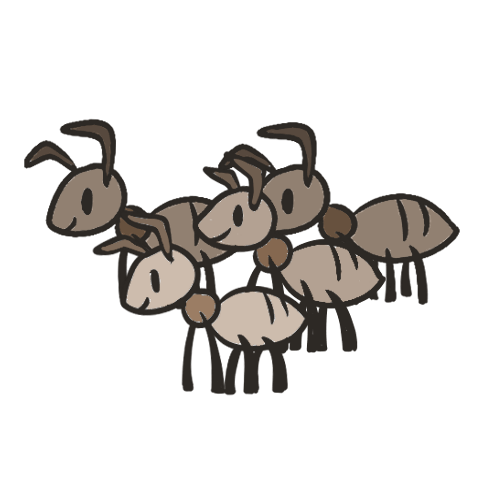
Ant hills:
- To repel them sprinkle them with eggshells, red pepper (not cayenne), bone or blood meal, talcum powder, wood ash, sulphur, coffee grounds or diatomaceous earth
- Also try pouring salted or soapy water over the hills or placing tomato leaves or walnut leaves on top of the nest
- To prevent ants from getting into a tree, wrap strips of cloth smeared with natural resin (tanglefoot, for example, is available at garden centers) around the trunk
Composting
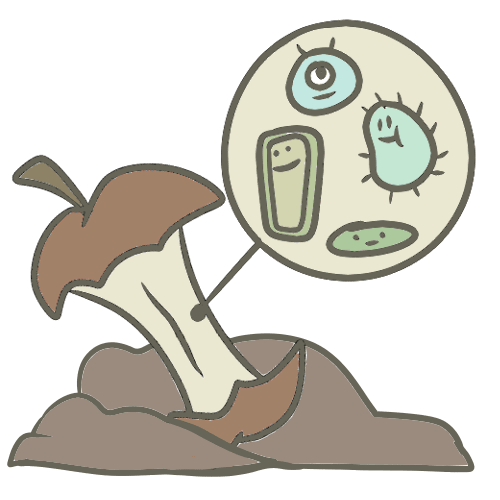
Composting is the breakdown of organic material by soil microorganisms. Much of our household waste is organic and, therefore, can be composted, diverting a significant amount of material from landfill. Finished compost is an excellent fertilizer for the garden or house plants. Visit TREA’S demonstration site at 1017 Western Road to view various composters. For further details on composting visit TREA’s composting 101 comprehensive guide and other how-to composting workshops.
The simplest way to compost is in an open pile. Leaves are easily processed this way but kitchen wastes may attract fruit flies and other pests. It is a good idea to enclose your compost pile and prevent odors. You can build a container or purchase one from various hardware stores. For instance, City EnviroDepots sell composters at cost.
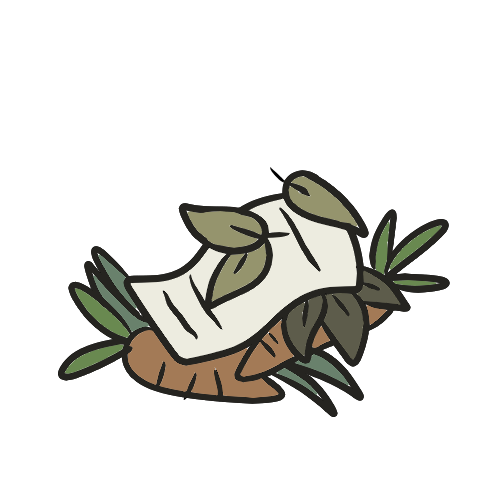
To start composting, begin with a layer of soil and carbon-rich (usually brown) material (leaves and newspapers). Spread a layer of nitrogen-rich (usually green) material on top (grass clippings and vegetables scraps). These two types of organic waste need to be balanced in the pile. To aerate the compost pile, you should turn the material with a shovel or special aerating tool. The more often you turn the pile, the faster the compost will form. You should always bury kitchen wastes in the pile so that there is no odor.
Anything you compost needs to be in small pieces. Shredding leaves, plant material and chopping up kitchen waste will increase the speed of the composting and avoid matted layers. For further details on composting visit TREA’s composting 101 comprehensive guide.
Compostable Materials include:

Kitchen Wastes:
— Fruit and vegetable peelings
— Bread, pasta
— Tea bags, coffee grinds and filters
— Egg, seafood and nut shells (these degrade slowly so used limited amounts)

Garden wastes:
— Grass clippings (use untreated)
— Leaves
— Garden trimmings (disease-free plants only) – chop up or shred woody stalks
— Weeds (avoid weeds that have gone to seed)
Other; in limited quantities since these break down slowly:

— Fireplace ashes – make sure they have cooled down
— Cardboard and paper – should be shredded and used in limited quantities
— Paper plates
— Cotton or wool rags
— Human hair, pet hair and feathers are high in nitrogen (use untreated)
— Cotton rags, felt waste, leather waste, rope (not nylon), string, wool rags
— Pine needles
— Granite dust, sawdust and other dust

Do not compost:
— Animal meat, bones, fish scraps, cooked food or dairy products as they attract animals
— Garlic inhibits bacterial growth necessary for composting
— Plastic, glass, foil and metal are not biodegradable
— Toxic materials – paint, solvents, motor oil and household cleaners
— Animal feces (dog or cat) may contain microorganisms that cause disease in humans
— Walnuts or rhubarb leaves contain high levels of material, toxic to insects or other plants
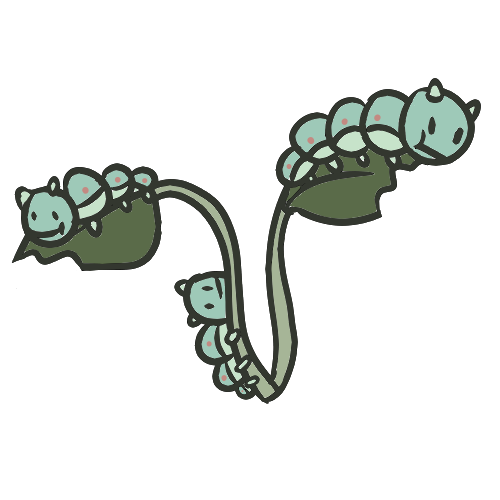
— Rhododendron or English Laurel leaves take too long to break down
— Plants infected with a disease or a severe insect attack where eggs could be preserved. The insects themselves could survive in spite of the compost pile heat (apple scab, aphids, tent caterpillars, etc.)
— Certain grasses with a rhizomatous root system such as crabgrass. These may not be killed by the heat of decomposition and can choke out other plants when the compost is used in the garden
Reprinted with permission from Recycling Council of Ontario, Toronto

Troubleshooting
What to do when the compost pile…
Smells bad: There are too many fruit and vegetable scraps, not enough air, or the material is too wet. Aerate the pile and add dry soil, leaves or shredded newspaper to absorb moisture. Coffee grounds can deodorize the compost pile.
Is dry and will not heat up: Add water to dampen the material.

Is wet and will not heat up: There is not enough nitrogen in the pile. Add nitrogen-rich materials such as kitchen scraps or grass clippings.
Attracts fruit flies and wasps: Kitchen scraps have been left uncovered. Cover the scraps with a layer of dirt or leaves.
Attracts animal pests: Cooked food or meat wastes have been added. Try to avoid adding these items, and make the container inaccessible to animals.
London Composts
This is a unique partnership of environmentally minded London businesses, nonprofits and local government working collectively to raise awareness of composing locally. For more information call (519)-661-4570 or email Jessica Favalaro, the City of London Waste Diversion Program Manager, at jfavalar@london.ca.
Vermicomposting
If you like the idea of composting but have never gotten started because you live in an apartment, don’t create enough waste to bother with or don’t like the idea of trudging through the snow in the winter to get to your composter, then vermicomposting may be for you.
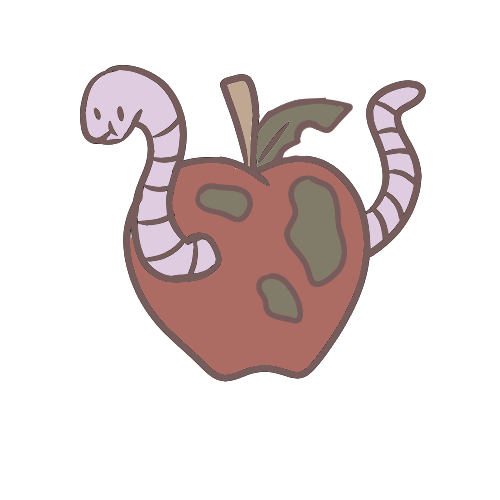
What is Vermicomposting?
This alternative to backyard composting uses red wiggler worms to compost organic waste. This is particularly good for kitchen wastes, and can be done indoors throughout the year. A pound of these hungry little wigglers will consume up to a pound of food waste each and every day! The worms live in a box or bin in bedding that is most often made primarily of mulched newsprint.

How does it work? The worms will eat just about any kitchen food scraps. Cut food into smaller pieces first. It’s a good idea to avoid meat and bones, fresh onions and garlic, fatty or spicy foods. Egg shells, in particular can be a problem and should be dried and crushed finely first.
Special vermicomposting worms called “Red Wigglers” can be purchased. A Canadian seller is Cathy’s Crawler’s in Brantford. All of their vermicomposting products can be found on their website. To order worms you can email them at cathy@cathyscomposters.com or call them at (905) 775-9495 locally or toll free at 1-888-775-9495.
Make your own vermicomposter:
1. Get a 30 cm to 60 cm deep container. Plastic works best. Punch ventilation holes in the top and drainage holes in the sides. Place the container on a tray to collect the moisture (use this to water your plants).
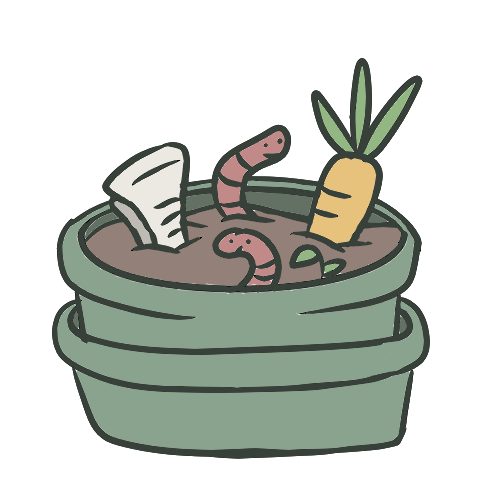
2. Tear newspaper strips and fill one-third of container. Dampen bedding and add worms. They should be red wigglers.
3. Bury food scraps in alternating areas of the bin. Smaller scraps help speed the process.
4. After two or three months, harvest your compost by placing the open composter under a bright light. The worms are light-sensitive and will dig into the bedding.
5. You can then remove the upper layer of compost (an ideal amendment to add to your potted houseplants or to add directly to your garden, your plants will love it). Then replace with fresh newspaper.
Excerpts reprinted with permission from Earthkeeper Magazine, Guelph.
How Many R’s Are There?
Beyond reduce, reuse, recycle, Greenpeace tells us there can be 10 ‘R’s toward sustainable living. When problems of mass-production, excessive marketing, and overconsumption are so systemic – we need to go further so:
- Repair things, repurpose or upcycle to create new items.
2. Refuse disposable straws, plastic bags, one-time use containers/packaging and cutlery from take-away restaurants.
3. Remember to bring your cloth shopping/lunch bag, cloth napkins, stainless steel water bottles, mugs, travel containers when going out.
4. Respect and help restore the planet by lowering your environmental footprint and stand up for tree planting, plastic-free oceans, and climate concerns.
5. Rethink your energy-efficiency and eco-consumerism habits
6. Redesign and your home to be energy efficient and to reduce wasteful habits.
8. Remanufacture products to be sustainable, recyclable, or compostable.
9. Recover local economies and ecosystems and maintain them for the future.
And what about rot as in compost, return, and refill? There are so many ways to live more sustainably!
Reduce

Reducing our waste is the most important aspect of solving the waste problem. There are several things you can do:
— Reject and buy only what you need. Before you buy an item, ask yourself if you really need it or could you make do with what you already have. This applies to all items, particularly food; which could end up in the garbage unused because of expiry dates, imperfections, or having bought too much in the first place

— Purchase items with a minimal amount of packaging. For instance, buy in bulk, take your own containers or use returnable, refillable containers
— Buy durable goods that cost a bit more but last a lot longer
— Do not buy disposable products such as disposable diapers, paper towels, plates and cups, throwaway cameras, straws, utensils, pens, lighters and razors
— Repair instead of replacing with something new
— Use empty jars to store rice, spices or other food items
— Donate unused yet still useful items to charities instead of disposing of them.
— Take the time to eat-in rather than take-out, an easy way to cut down waste.
Check your City waste calendar for other businesses that take materials such as construction and renovation materials, textiles, home furnishings, electronics, appliances, plastic bags, vehicles/motor oil etc., batteries, propane tanks, paint, fluorescent bulbs, medications and so on.
Reuse
You can practice reusing by buying good used articles at various outlets, flea markets, garage sales, consignment shops, auctions and yard sales around the city. Check media listings online, neighbourhood papers and grocery store notice boards for events or buy online from reputable sources from the owner. Also, see listings in the “Ecowise Consumer” section of this directory.

There are countless items that can be reused instead of being thrown out. Some ideas include:
— Pass along clothing in good condition that your children have outgrown to friends or thrift stores, charities and places of worship
— Reuse black plastic and no.5 plastic if you already have them
— Return hangers to most dry cleaners
— Choose cloth diapers over disposables
— Inquire if yarn and cloth scraps, buttons, wallpaper ends and samples, toilet paper rolls, small boxes, egg cartons, yogurt containers, etc. can be used by nearby nurseries, elementary schools and day care centers
— Donate eyeglasses to participating places of worship or the Canadian National Institute for the Blind
— Use a sewing machine, to make new items. Worn-out bed sheets are usually only damaged in the middle, and the sides can be sewn into pillow covers; frayed bath towels can become face or hand towels or dish cloths; old towels can be used as cleaning rags to replace paper towels; old drapes can be used to make shopping bags
— Plastic grocery store bags can be reused several times or recycled on your next trip to the store (don’t put them in the blue box). But better yet, use dependable reusable cloth bags, and small cotton bags for veggies and fruit. Keep a couple extra in the car.
— Used one-sided paper can make pads of paper to write grocery lists and reminders

— Plastic containers, ie margarine, can be used to freeze food, meal prep, store leftovers, or transport a snack
— Magazines can be passed on to friends, donated to hospital or clinic waiting rooms, or to other institutions
— Wrap your special gifts in newspaper, magazines, or old posters.
— Books can be donated to hospitals or resale organizations or resold in used book stores
— Empty egg cartons can become seed planters, or organizers for beads, earrings, or crafts or taken back to grocery stores or farmer’s markets.

— Buy products such as soap, and lotion in refillable or recyclable containers.
— Compost kitchen scraps and yard waste
— If possible, take your compostables home from work in the containers in which you brought your lunch.
— Keep some scrap paper by your printer to print out draft copies.
Excerpts from the Ontario Recycling Information Service Toronto and past TREA listings
Recycle
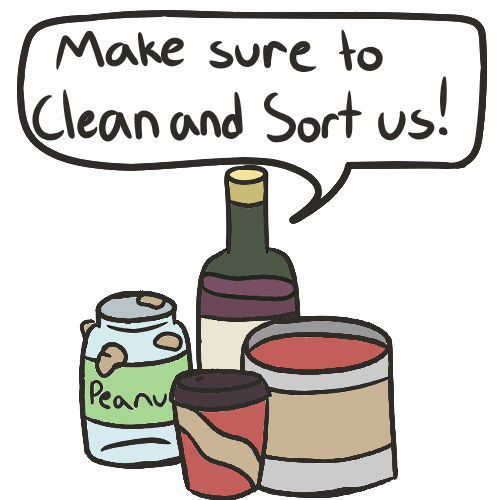
Many recycling strategies can be employed to reduce waste. The curbside program is an important visible part of a community’s waste processing. However, recycling alone will not solve our waste problem. Some recycling processes can produce as much air pollution as garbage incineration. Therefore, it’s essential we make efforts to reduce waste by purchasing goods with little or no packaging. Additionally, recycling isn’t sorted or rinsed correctly by all homeowners. This causes more garbage or maintenance at recycling centers. If you have questions on local sorting, visit the City of London’s recycling webpage.

Curbside recycling:
Check your waste booklet and calendar that was sent out to residents of London for items that can go to curb. Note the maximum 3 container garbage limit otherwise you need to have tags from the EnviroCentre on extra bags. Don’t have bags that weigh more than 20 kg (44 lb).
Blue Box Stream #1 Paper products
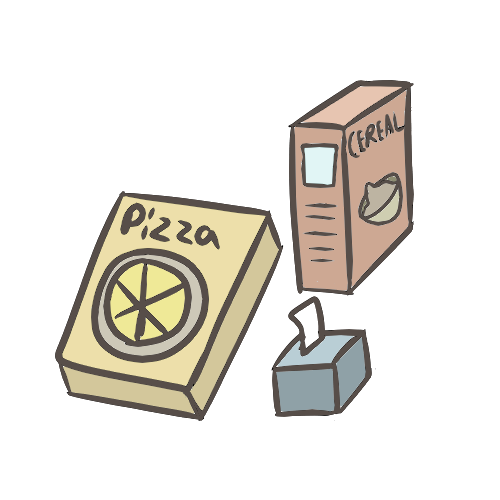
Examples – paper products: boxboard (ie cereal, detergent, cracker and tissue boxes); cardboard (ie clean pizza boxes, packing boxes); catalogues, magazines, newspapers, books, flattened egg cartons and tubes, flyers, envelopes and writing paper. Flatten cardboard and tie into bundles no larger than 75 cm X 75 cm X 20 cm (30” X 30” X 8”).
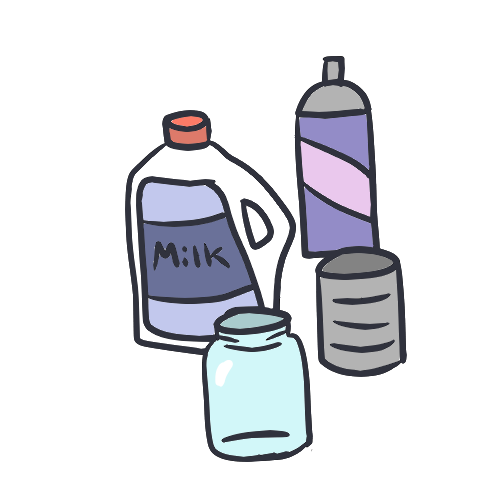
Blue Box Stream #2 Food, beverage and liquid container
Examples – rigid food and liquid containers (ie milk, juice, soup), coffee cups, aluminum and steel cans; empty paint cans, aerosol cans, aluminum foil/pie plates; glass bottles, jars; plastic bottles and tubs (with 1-7 on the bottom of the container including plastic trays and clamshells). Stream 2 products can be set out in a blue box or a see-through blue bag.
Interested to find out more? Contact :
— Recycling Council of Ontario – PO Box 83, Orangeville, ON, L9W 2Z5 M6G 1A5, https://rco.on.ca, 1-800-245-6910, or information@reco.on.ca.
Every tonne of recycled paper saves 17 trees, 27,000 litres of water and enough energy to heat the average home for 6 months
— Share or rent large, expensive items that you use only occasionally, such as lawn mowers, special gardening equipment and tools
— Make an agreement to share newspaper subscriptions with a neighbour

— Place a “No Flyers” sign on your mailbox, or write to the Canadian Marketing Association (CMA), 55 University Ave #603, Toronto, ON M5J 2H7 or email donotmail@theCMA.ca to be removed from mailing lists
— If you have ideas on how manufacturers can cut down on their packaging waste, write them with your suggestion – it may even save them money.
— Donate old blankets and towels to a local homeless shelter or animal rescue shelter.
Food Waste is the Problem
Much of our residential waste is managed by various municipal programs. The City continually looks at new innovations recognizing the Ontario government has recommended targets as far back as December 2008 suggesting 80% waste diversion targets for municipalities. Although that goal was not met by municipalities then, the current Waste-Free Ontario Act now aims for a zero-waste, zero-emissions Ontario with goals of waste diversion of 30% by 2020, 50% by 2030 and 80% by 2050.
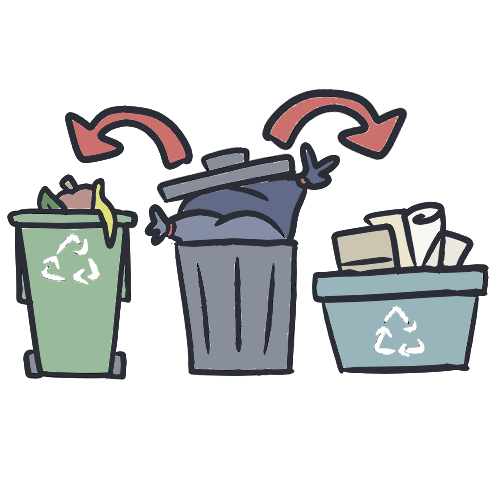
London’s 60% Waste Diversion Action Plan aimed to increase household waste diversion from 45% to 60% by 2022. The plan aimed to do this by increasing the amount captured in the Blue Box program, waste reduction and reuse programs such as waste reduction education and policies, lending libraries, reuse events, and other organic initiatives such as food waste reduction, home composting, community composting. Unfortunately this plan was largely held back due to the Covid-19 pandemic in 2021. As a part of this plan the City implemented the Green Bin program in January 2024 with the purpose of providing a curbside organic waste pick-up program to divert more household waste towards composting.
A recent London study with 1,700 participants included 600 who agreed to a further study of their household waste. Survey results found leftover foods representing 30-35% of London’s waste or that the average household has been throwing out about $600 (125 kg) of food each year. This was found to be equivalent to 323 meals a year. Survey answers are expected to identify new ways to help change behaviours and reduce waste from going to the curb.
Yard waste

Check your waste calendar for collection do’s and don’t and pickup days. If you have questions, call 519-661-2489 or visit the City of London’s website. There are three ways to dispose of yard waste: at the curb, you can take the materials to an Envirodepot, or in your Green Bin. Check the calendar for times, seasons and materials collected.
— Curbside collection – Place yard materials at the curb by 7:00 am on the Monday of the green week. Pick-up can take place anytime during the week (including Saturday).
— London EnviroDepots are at 28 Clarke Road (S), 1450 Oxford Street (W) and Try Recycling at 21462 Clarke Road (N). Check your calendar for times when EnviroDepots are open. Also note the two City EnviroDepots sell composters ($35 each, cash only).
——————————————————————————————–
Related Business Directory
| AAROC Aggregates | 3003 Page St, London, ON N5V 4J1 519-659-9110 admin@j-aar.com https://j-aar.com/materials- group#AggregatesRecycling | This is a Construction and Material Group that is also one of the pioneers of construction and demolition recycling in Southwestern Ontario. It has many years of experience in recycling wood, drywall, shingles, asphalt, and concrete. |
| Baseline Nursery | 9070 Elviage Drive, London, Ontario N6K 4N5 519-657-1265 info@baselinenurseries.com https://baselinenurseries.com/ | This business is a local garden centre that works with local and specialty growers that started off as a local tree farm themselves. They have a wide selection of trees, shrubs, and perennials. |
| Canada Green | 1666 Church Ave. Winnipeg, MB Canada R2X 2W9 204-415-6585 sales@cagreen.ca https://www.cagreen.ca/ | This company is the foremost Canadian supplier of environmentally friendly products, they offer a range of compostable food service products, shopping bags, bin liners, and other relevant products. |
| Car Heaven | 134 Langarth Street East, London ON N6C 1Z5 1 -877-798-7701 info@carheaven.ca https://carheaven.ca/ | This company recycles your vehicle and donates the proceeds to a charitable organization on their list of your choice. |
| Cedarbrook Tree Farm | 10324 Hedley Dr, Middlesex Centre, ON, N0M 2A0 519-495-4778 cedarbrooktrees@gmail.com https://www.cedarbrooktrees.com/ | This company is a local family-owned tree and shrub nursery that sells directly to homeowners from their farm for a reduced price as well as supplying local garden centres and landscapers with trees and shrubs. |
| Clintar Commercial Outdoor Services | 11 Artisans Crescent, London, ON N5V 4S1 519-649-4555 Email Form https://www.clintar.com/london/ | This is a socially responsible landscaping company that works to acquire more efficient and sustainable practices and products to preserve the earth’s natural resources for future generations to enjoy. |
| Convertus | 307 Commissioners Rd W Unit 8, London, ON N6J 1Y4 519-663 4446 info@convertusgroup.com https://convertusgroup.com/ | This company provides London’s Green Bin program and works with businesses, municipalities and city officials to design, build, operate and service sustainable organic waste treatment facilities. |
| Eco-Packaging | 15030 54a Ave #101, Surrey, BC V3S 5X7 +1-604-451-8876 Info@ecopackaging.ca https://ecopackaging.ca/ | This company sells compostable food service wares to help reduce the environmental impacts and to continuously seek better alternatives to enhance greener changes and practices. |
| Eco Products | 1-888-679-7845 webcare@ecoproducts.com https://ecoproducts.com/ | This company makes products with renewable and post-consumer recycled materials. They also make compostable products for the foodservice industry to help their customers divert more of their waste from landfills. |
| Electronic Recycling Association | #15 489 Brimley Rd Toronto, ON, M1J 1A3 844-521-0932 info@era.ca https://www.era.ca/ | This organization recycles and repurposes used desktops, notebooks, computer peripherals, software, and more. They offer 100% secure on-site and off-site data destruction then work to refurbish the tech to donate to charities across Canada. |
| ENJO | 905-629-4888 Info@enjo.ca https://www.enjo.com/ca/ | This company sells safe and effective cleaning solutions that are 100% sustainable and free of unpronounceable chemicals to provide peace of mind to their customers. |
| Enviro Masters Lawn Care | 4474 Blakie Rd Unit 128, London, ON N6L 1G7 647-372-2491 Email Form https://www.enviromasters.com/ | A local company with locations across Canada. They use lawn care practices that are eco-friendly with a community-centric mindset. |
| Environment and Climate Change Canada | Place Vincent Massey Building 351 Saint-Joseph Boulevard, Gatineau QC K1A 0H3 1-800-668-6767 enviroinfo@ec.gc.ca https://www.canada.ca/en/ environment-climate-change/services/managing-reducing-waste/contact-information.html | The federal ministry that works to improve the quality of life of Canadians by protecting and conserving our natural heritage and preventing and managing pollution, promoting clean growth and a sustainable environment for present and future generations. |
| Envirowise | 3148 Highland Blvd, North Vancouver, BC V7R 2X6 +-604-243-1912 info@envirowise.eco https://envirowise.eco/ | A Canadian organization with eco-friendly products that empowers individuals and businesses to make sustainable choices for an enhanced business model and a greener future. To qualify as eco-friendly, a product’s entire life cycle is assessed then given an ecological footprint. |
| Featherfields Bird & Garden | 1570 Hyde Park Road Unit #5, London, ON N6H 5L5 519-474-1165 featherfields@featherfields.com https://featherfields.com/ | A local company that strives to be a haven for bird lovers and gardeners that sells high-quality, high performance bird accessories and products and also repairs old bird feeders. |
| The Garden Club Of London | 625 Springbank Dr, London, ON N6K 4T1 519-471-6200 Email Form https://gardencluboflondon.ca/ | A local botanical club with a focus on education in the areas of design, and horticulture. They also have a commitment to conservation and enhancement of natural areas. |
| Gerdau Metals Recycling | 2025 River Rd, London, ON N5W 6C4 519-455-4639 1-800-637-8144 GLNInfo@Gerdau.com https://www2.gerdau.com/metals-recycling | This metals recycling company pays you a fair price for your scrap metal. They also offer Metals Recycling Partnerships that support the circular economy. |
| Green Valley Recycling | 1200 Green Valley Rd, London, ON N6N 1E3 519-681-0606 info@greenvalleyrecycling.ca https://www.greenvalleyrecycling.ca/ | This local recycling company services the community both by accepting and recycling unwanted goods, renovation & demolition waste and junk. They also sell high quality recycled landscaping products both for home and commercial uses. |
| Green Thumb Landscaping | 7856 Fifth Line South Milton, ON L9T 2X8 +1-905-875-1805 1-800-265-5656 https://horttrades.com/ | An organization that provides other members with helpful, constructive and professional advice, coaching and mentorship to foster a favourable climate for the advancement of the horticulture industry in Ontario. |
| The Grove Wormery | 900 King Street, London ON N5W 5K3 519-438-7203 1-800-619-4629 thegrove@westernfairdistrict.com https://www.thegrovewfd.com/the-wormery | This is a green initiative coming out of London’s Western Fair District that makes rich fertilizer through vermicomposting practices to support London’s Agriculture Strategy, reduce their emissions, and strengthen London’s Urban Agriculture. |
| The Indoor Gardener | 4093 Meadowbrook Dr, Unit 117, London, Ontario N6L 1A4 519-652-4224 Email Form https://www.indoorgardener.ca/ | This local gardening company sells hydroponic gardening systems as well as everything else needed to garden from indoors. |
| John Zubick Ltd. | 105 Clarke Rd, London, ON N5W 5C9 519-451-5470 info@zubicks.com https://www.zubicks.com/ | This local company has been serving London and area for more than 70 years, and is recognized in the community and industry as a long-time leader in environmentally responsible practices for processing mixed scrap materials. |
| Lee Valley | 2100 Oxford St E, London, ON N5V 4A4 519-659-7981 customerservice@leevalley.com https://www.leevalley.com/en-ca | This company sells high quality tools for gardening, carpentry, home-reno, and even for your kitchen. They are so confident in their products that they have a 30-day guarantee return policy to assure their quality. |
| LKQ Shaw Auto Recyclers | 1765 Pension Ln, London, ON N5W 6C7 519-455-1200 info@shawauto.on.ca https://www.shawauto.on.ca/ | This company is Ontario’s largest in-house selections of major recycled part assemblies. They offer alternative and specialty parts as well as a broad range of replacement systems to repair and accessorize automobiles and other vehicles. |
| London Middlesex Master Gardeners | 625 Springbank Dr, London, ON N6K 4T1 Email Form https://londonmiddlesexmastergardeners.com/ | This organization has been educating home gardeners since 1985 with practical, ecological gardening advice. Their blog is also a great online resource for gardening tips and information. |
| London Salvage & Trading Co Ltd | 333 Egerton St, London, ON N5Z 2H3 519-451-0680 info@londonsalvage.com https://www.londonsalvage.com/ | This is a family owned and operated business that helps London, Ontario, and the surrounding areas by assisting people in the recycling of their scrap metals and supply a customer service for disposing of rubbish and demolition materials. |
| Natural Turf | 381 Bering Ave, Etobicoke, ON M8Z 3B1 416-621-2900 Email Form https://naturalturf.ca/ | This company has been providing Organic Lawn Care for over 30 years. They create customized lawn care programs that feed the soil first and then in turn feeding the turf to create a well-balanced growing environment for your lawn. |
| Nutri-Lawn Inc. | 79 Bessemer Rd, London, ON N6E 1P9 519-455-2965 1-866-487-9792 Email Form https://www.nutrilawn.com/london | This Canadian company has provided spot treatment of weeds, with a focus on the reduction of chemicals, and a more ecology friendly way of caring for lawns since 1985. |
| Ontario Growers Supply | 1 Adelaide St N, London, ON N6B 3P8 519-451-4769 Ontario.growers@bellnet.ca https://ontariogrowerssupply.com/index.php | This local Ontarian company sells organic gardening supplies, organic pest control, nematodes, and hydroponic gardening supplies. |
| Project Neutral | 832 College St., Suite 301 Toronto ON M6G 1C8 hello@projectneutral.org https://app.projectneutral.org/ | This is a project with a strong focus on neighborhood action and distributed leadership. They have partnered with municipalities including the City of London to provide a Carbon Footprint Calculator. |
| Progressive Waste Solutions | 4645 Wellington Rd S, London, ON N6E 3W7 519-686-8484 https://www.recyclingproductnews.com/ company/4970/progressive-waste-solutions-ltd | This is an industrial recycling company. They provide full-service, vertically integrated waste management companies, providing non-hazardous solid waste collection and landfill disposal services to commercial, industrial, municipal and residential customers. |
| Retire Your Ride | 1-888-510-0919 info@retireyourride.ca https://retireyourride.ca/ | An organization that ensures your vehicle is scrapped in an environmentally responsible manner while also ensuring you are paid the right price for the scrap recycled. |
| Second Harvest | 120 The East Mall, Etobicoke, ON, M8Z 5V5 416-408-2594 email@secondharvest.ca https://secondharvest.ca/ | Second Harvest is a non-profit charity that reduces food waste from suppliers through their Food Rescue program that also enables them to give food to those who need it. They also have an app called “Second Harvest Food Rescue App” on the app store that makes it easy for businesses to donate food, and charities to access that food. |
| Shred-It | 15825 Robins Hill Rd Unit 2, London, ON N5V 0A5 +1 855-497-4733 Email Form https://www.shredit.com/en-ca/service-locations/london-ontario | This company’s services include diverting medical waste from landfills, and alternative use opportunities that protect the public from harmful waste, and help the healthcare industry make progress towards sustainability and climate goals. |
| Swish Clean-It London | 16035 Robins Hill Rd, London, ON N5V 0C4 519-659-2101 1-855-467-9474 https://swish.ca/ | This Canadian company provides a very large variety of cleaning solutions with a catalogue of 500+ affordable and environmentally responsible items while keeping sustainability as a core principle in their business. |
| Try Recycling | 3544 Dingman Drive London, ON N6E 3X1 519-457-1566 csr@tryrecycling.com https://tryrecycling.com/ | This is London’s largest public recycling drop-off facility, they accept up to 190kg of a variety of materials. Prices vary by material and weight but they do their best to keep the dropped-off waste out of the landfill. |
| TRS Components | 16783 Thorndale Rd, Thorndale, ON N0M 2P0 519-461-1180 Email Form https://trscomponents.ca/ | A quality-driven locally-born roofing company that has grown to supply a variety of building/ home reno products and installation services. |
| W12A City of London Landfill Site | 3502 Manning Dr, London, ON N6L 1K6 519-661-2489 service@london.ca https://london.ca/living-london/garbage-recycling/landfill | W12A Landfill accepts waste generated within the City of London, the Municipality of Thames Centre, Lake Huron and Elgin Area Water Treatment Plants, TRY Recycling, the County of Middlesex (including First Nations communities) and the County of Elgin. |
| Wild Birds Unlimited | 502 Springbank Dr, London, ON N6J 1G8 519-657-0745 wbu-london@pobox.com https://london.wbu.com/ | This company sells bird feeders and feed. They also work alongside local environmental groups such as Nature London, Talbot Land Trust, Upper Thames River Conservation Authority, and Bird Friendly London. |
| WildCraft Permaculture | 127 Base Line Rd East, London, ON N6C 2N6 519-857-7615 info@wildcraftpermaculture.ca https://www.wildcraftpermaculture.ca/ | Wild Craft designs and installs holistic permaculture systems for urban residential, rural agricultural and commercial properties as well as consults on public land stewardship to create a landscape that supports the development of long-term regeneration of all ecosystems. |
| World Atlas | +1-514-232-4302 Email Form https://www.worldatlas.com/articles/countries-with-the-largest-ecological-footprints.html | This organization takes global data and compares countries in many different topics and qualifiers, including ecological footprints and pollution data. |
